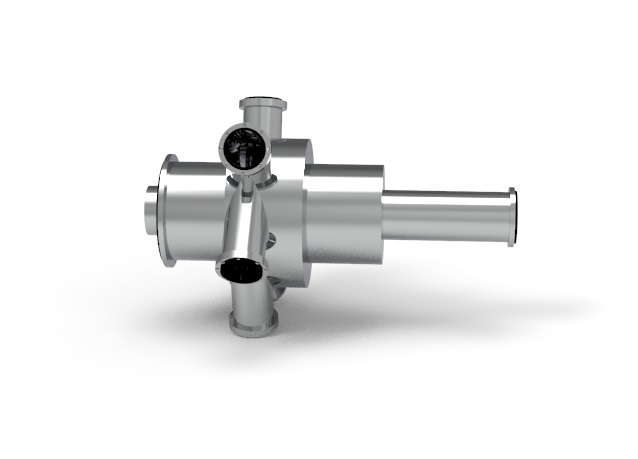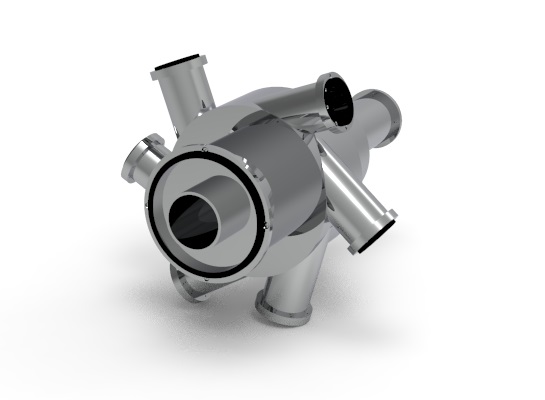about the inventor-robert wajda
About the Inventor - Robert Wajda
It is an honor and privilege to announce the Patent for The Ducted Vortex Heating & Cooling System (Pat. 11499760) was issued on November 15, 2022 – Entrepreneur’s Day.
As a newfound breakthrough technology that has been years in the making, this project is at the beginning of a 20-year marketing and development cycle. At the onset of the pandemic and continuing throughout, this unique project began to take shape and form into what is now a 100% tangible product that needs funding and support from all levels and trades of professionals that are inclined to see humanity evolve closer to a net-zero-compliant world.
The Ducted Vortex is an environmentally friendly and compliant heating and cooling system that creates hot and cold air on demand by simply spinning air into a vortex. Wajda believes that with more than 8 billion creative minds on the planet, anything that can be conceived can be achieved. Never in time has there been such an abundance of information available for humans to access.
This is the beginning of a 20-year patent protection cycle with proof-of-concept prototypes already made and tested. By having a patent fully issued and fully protected for the next 20 years, it is our intention to build a market-ready version. Once completed, it will be put on full display for the world to see how a breakthrough technology can change the world. It will show how humans can live and enjoy the comforts of heating and cooling by harnessing phenomena in nature.
This is accomplished by recreating and harnessing natural phenomena. What makes this project so exciting is that there will be no use of any chemicals, refrigerants, compressors, or heating elements while energy conservation will also be on full display.
Once several market-ready prototypes have been produced, we will launch a United States tour in hopes of attracting all those who feel that this is a necessary part of advancing this form of green technology so that the earth can be saved for future generations to come.
We feel that The Ducted Vortex Heating & Cooling System will have a very profound effect on how people proceed forward in advancing other various green energy projects. It is a goal to leave no stone unturned and move carefully forward in our search for the right contributors towards this technology that is 50 years ahead of its time.
Robert Wajda Entrepreneurial History
Once in a blue moon, we as individuals come across someone in life who is always working on an exciting idea or project. Robert Wajda, inventor extraordinaire, is precisely this type of person. Innovation and creative thinking drive Mr. Wajda towards a greater understanding of where the possibilities lie with future endeavors to improve the quality of life for everyday people. A thinking mind never turns off, and that’s exactly the method he approached in consideration of this very novel invention and its early beginnings.
Problem-solving never ceases to exist, even while we are asleep. When the human brain thinks about something consistently, realities begin to unfold. Wajda can analyze product simulations thousands of times before a single pen stroke on paper while lucid dreaming. A talent some of the greatest inventors of all time, such as Nicola Tesla were able to perform. This is natural for Wajda.
This may sound like lunacy to some, but only imagine that it is more common than you might think. Even as this project receives its Patent from the United States Patent and Trademark Office (Pat. 11499760), Mr. Wajda has (3) additional patents in the works. Projects such as the solar wind turbine with lever assist, lighter than air airships, via air displacement, and other exciting products.
Human ingenuity and dealing with the trial-and-error proceedings that are attached to such a title have led many people down paths of huge success. All innovations in time are received with reluctance, hesitation, and negative optimism. This is normal for everything that has ever existed.
The business of entrepreneurship can be lucrative, and when combined with innovation provides a unique way to move forward with new and useful ideas constantly. Ingenuity does not stop with design but instead expands with the genuine passion for creativity, especially coupled with having fun.
Mr. Wajda has always been involved with drafting new ideas and considers this aspect of innovation an essential part of daily life. Early academic and apprenticeship training in mechanical and industrial drafting gave him a unique grasp on the techniques that many early 1900 patent renderings depict. Training in Computer Animated Design (CAD) helped hone Mr. Wajda’s skills in visualizing ideas in 3D moving into modern design and engineering.
Preference for Mr. Wadja will always rest with the old-school approach of using a drafting board with an attached machine arm, stencils, and French curves. Thick lead allows prominent lines to be drawn with an Indian ink finish that signifies all his drafts. This specialized form of drafting helped take this project to the next level, shaping it tangibly from the beginning. Even today, people study and refer to previous patent drawings for reference and detail. This will also ring true for years to come as future generations begin their quest for innovation.
Thinking Outside the Box
Technical design and a ‘thinking out of the box’ mentality will always remain a constant in central aspects of the innovation and manufacturing industry. Technology has improved allowing drafting to be accomplished digitally, but freehand techniques remain basically the same. Almost every great invention throughout time has been designed by hand with pen and paper. Drafting by hand allows better decision making through a slower pace that brings out the extremes of creativity. The visual perception of designing on a larger surface brings drawings up close allowing personal connections to be made instantaneously with the design at hand.
Exaggerated angles that are incorporated into specific techniques allow the design(s) to seemingly appear three-dimensional. This visual representation on paper is why artists and painters have worked from easels and flat drawing surfaces for hundreds of years. The quality of these early patented works are timeless masterpieces. Mr. Wadja’s niche of combining creative engineering that is geared towards art and constructive design displays the forte that is needed to expand the untapped potentialities of the HVAC market and industry. These drawings were allowed by the United States Patent and Trademark Office with no objections on the first try.

Why is hand drafting a preferred method for you over CAD design, even in 2022?
I am one of the lucky ones that have extensively trained on both table drafting and CAD design. My drafting instructor 1985, Arthur Frederick, was a true master. I established a student/teacher apprenticeship under his direction for several years, and the ropes of the professional drafting trade were revealed to me through much patience and practice. I found my passion in the ‘old school’ approach of getting up close and personal with the project at hand.
Drafting by hand seems slow and error-prone, so why not make the full conversion to CAD?
When I draft a project by hand the decision-making process is very slow. This allows more creative thought processes to flow in and out of freehand drafting. Of course, there are errors that will always occur when conceiving ideas with pen and paper. When graphic and CAD designers draw on a computer screen, the viewing space is flat and contained. You really can’t visualize a design that is internalized in the mind when working in 3D on a flat computer screen. At least for me it seems difficult.
When drafting on a drawing board, I use large 18” x 24” vellum paper positioned at a 45-degree angle. The angle alone brings the drawing right up close to me. This visual perception allows creativity to flow where I can almost see the design(s) I am working with in my mind become 3D as I am drawing it tangibly on paper. Visual perception is key to why many artists and painters have worked from easels for hundreds of years.
What inspired you to excel in the field drafting and establish yourself as an entrepreneur?
Being a master draftsman myself, I could look into the drawings of the late 1800s to early 1900s and visualize the ink strokes. I can see minor mistakes that were covered up. With ink, you only have one chance to get it right so you generally do the most difficult part first with lots of patients.
Table drafting versus CAD development?
What excites me the most is that 200 years from now, I already know someone will be studying my drawings as they are now a permanent part of American history.
Individual Sponsorships – Support this Project
To build out the market-ready versions for a tour across the country, we need to raise at least $500,000. We need your support and every sponsorship gets us closer to our goals. All sponsorships will receive a quarterly newsletter and thank you letter.














